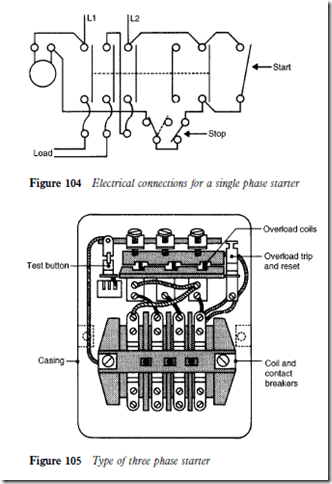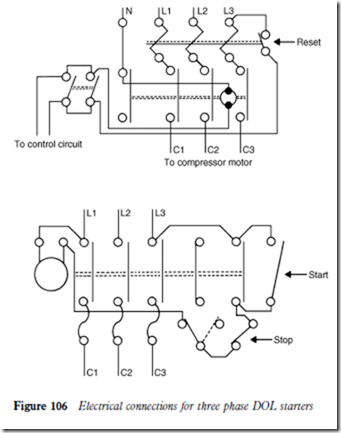Three phase electrical connections
Smaller compressor motors incorporate overload protectors, either internally or externally mounted, and use various small starting devices. By contrast the three phase motor, being larger, requires more sophisticated methods of automatic starting and overload protection, provided by contactors or starters.
Contactors and starters
A contactor is a power operated switch suitable for frequent making and breaking of an electrical circuit. A starter is a power operated switch with inbuilt overcurrent features, employed for starting a motor and protecting it during running. Both controls enable large currents to be switched by means of a system control (thermostat) with low current rating.
Suppliers of these controls are numerous. Each has its own options with regard to overload protection, single phasing protection and accessibility for component replacement. Wiring diagrams for the controls are normally supplied or are available on demand. These should be referred to before any attempt is made to install, make electrical connections to or diagnose faults on the controls. Because of the different types of control, only typical examples are dealt with here. Figure 104 shows connections for single phase starting, and Figure 105 shows a particular three phase starter.
Direct-on-line starter
With the standard squirrel cage induction motor, it is advantageous to have DOL starting. This allows a cheaper motor starter and control gear to be used, and also imposes less strain on motors during starting.
However, electrical supply authorities will normally restrict starting currents. DOL starters should only be specified for motors within the supply authority limits.
Figure 106 shows the electrical connections for three phase DOL starters.

